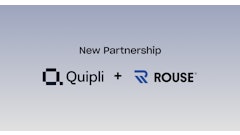
I have been involved in the rental business for many years, back to the time when Clark Equipment Company started coming up with various rental programs their dealers could provide to customers primarily in an industrial business, a distributor, or anyone else who needs to move objects around to complete the building process and to move them into the selling process. These programs were well received and benefited the OEM, the dealer, and the customer.
The process moved from dealers selling equipment to offering rental as a means to avoid purchasing units, to rental with maintenance to 100% rental companies. Get rid of the dealer part of the equation and you wind up with pure rental companies that charge for both costs of ownership and operation included in the rental fee.
Believe it or not, this was before United Rentals et al—a long time ago.
Now we have dealers, rental companies, and retail stores taking on the cost to own and operate, which they pass on to a customer in the form of daily, weekly, and monthly rental contracts. In some cases, the contracts allow for a portion of the rental payments to be applied against the purchase of the unit being rented.
Dealers and rental companies now rent trucks and cars, construction equipment, material handling equipment, aerial access equipment, and a ton of support equipment used on construction sites. The rental equipment, whatever that may be, is primarily purchased from OEMs who support the transaction with warranties that support the rental company should any repairs or replacements need to be made during some amount of time post-purchase.
Equipment rental is now at a time when the top 100 rental companies topped $40 billion, $41 billion to be exact regarding 2023, which is 16% higher over the 2022 billing amount. We are talking big numbers here, which I believe will continue to grow because the rental units keep getting better and more efficient, and contractors reaching the conclusion that it is cheaper to rent utility value as opposed to owing and operating equipment, especially now that equipment prices are way higher, which of course cost more to finance and insure as well. Add on the shortage of qualified techs to maintain contractor-owned equipment and you make rental transactions even more feasible In short, this leaves rental company owners sitting on the right side of the demand and supply curve at this point of time. @ihorbondarenko - stock.adobe.com
@ihorbondarenko - stock.adobe.com
The rental business was so good that Wall Street attracted larger companies to go public, and as a result to have access to capital that allows them to expand their business and territory. Upon further review, the top 10 rental companies represent 75% of that $41 billion number referred to above. And we all know that this top group, especially the public companies, need to improve their top line as well as their bottom line to keep Wall Street happy. They do this of course, by buying up a lot of companies every year expand both their Top and Bottom lines to impress the Market. Which I suppose is not so bad for the remaining 90 companies on the list, because if they are doing a good job managing their company they may get a phone call to see if they want to convert their investment into cash.
Everyone in the 11-100 position should want to operate their business in a manner that provides an ROI that meets the required standard for a potential buyer. And all rental companies, whether they are in the TOP 100 or not, should be doing the same, because with the pace of the turnover is taking place your company could wind up being listed in the TOP 100 list, ready to be converted into cash for your retirement fund.
Those who think they don’t need to beef up their performance should think about that again because those top 30 or 40 rental companies are taking steps to make them more competitive with smaller companies. They have pricing power on the purchasing side as well as on the used sales side of the business. They are digitally upgrading their systems and will use AI (I hate saying that) to provide a better customer experience from the time a customer decides they need a unit for a jobsite. Larger rental operations will also be monitoring machine analytics to avoid shutdowns during the rental period. They will also have accessory equipment available and thereby make the rental experience seamless. In the end, the larger rental companies will be able to compete with the smaller dealers who are working their butts off, believing that their size gives them an edge in terms of “cost and service”, which is probably not true any longer.
Rental company owners not on the list need to be aware of what the competition is doing and at the same time manage their operation using a “CASH IS KING “ approach. The first thing they need to do is make sure their website has an “above standard” approval rating that will attract new and former customers, makes the rental process easy to deal with, can deal with questions that come up, contains access to customer accounts and billing, and helps you get paid in a reasonable time frame. To see what this type of website looks like I refer you to look up TOPLINE PRO. Believe it or not, the company was mentioned in Forbes, started by a young man under 30 years of age who was able to raise $17 million in seed money. Being able to operate your rental business, with a website that can function like TOPLINE PRO would make you more efficient and able to provide better service to your customers. I believe the estimated monthly cost for such a website is between $150-$300 per month. You improve your business while meeting your CASH IS KING requirement. And I can bet your website will match up with the big boys and as a result assist with both keeping and attracting new business.
I brought up the website issue because I saw a customer satisfaction survey produced by the Distributors Strategy Group that measured how customers and potential customers feel about the service level with a company they do or plan to do business with. The survey covered all levels of customer personnel. The results for the sample under review were quite satisfactory except for one area. Almost every company participating in the survey was dinged because the website was subpar and hard to use. I don’t know about you, but I would hate to lose business because my website is substandard.
To sum up this discussion I suggest you upgrade your website to have it operate at the same level as TOPLINE PRO. It will help you compete with the big boys, make you more efficient, and not cost you an arm or leg.
Next time we can move on to another strategy for 2024 and 2025—there are plenty of issues to cover.




















